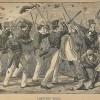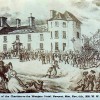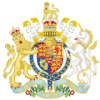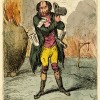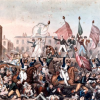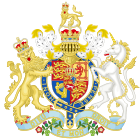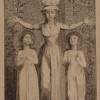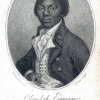Timeline: Race, Gender, Class, Sex
Created by Dino Franco Felluga on Tue, 08/24/2021 - 12:56
Part of Group:
 This timeline is part of ENGL 202's build assignment. Research a topic that teaches us something about race, class, gender, or sexuality and then contribute what you have learned to our shared class resource. As the assignment states, "Add one timeline element, one map element and one gallery image about race, class, gender, or sex to our collective resources in COVE Editions. Provide images, sources and sufficient detail to explain the historical or cultural element that you are presenting. Interlink the three objects." A few timeline elements have already been added (borrowing from BRANCH).
This timeline is part of ENGL 202's build assignment. Research a topic that teaches us something about race, class, gender, or sexuality and then contribute what you have learned to our shared class resource. As the assignment states, "Add one timeline element, one map element and one gallery image about race, class, gender, or sex to our collective resources in COVE Editions. Provide images, sources and sufficient detail to explain the historical or cultural element that you are presenting. Interlink the three objects." A few timeline elements have already been added (borrowing from BRANCH).
Timeline
Chronological table
|
Date |
Event | Created by | Associated Places | |
|---|---|---|---|---|
| 2 May 1842 |
Second Chartist Petition
ArticlesChris R. Vanden Bossche, "On Chartism" Related ArticlesJo Briggs, “1848 and 1851: A Reconsideration of the Historical Narrative” |
David Rettenmaier | ||
| Nov 1839 |
Newport Uprising
ArticlesChris R. Vanden Bossche, "On Chartism" Related ArticlesJo Briggs, “1848 and 1851: A Reconsideration of the Historical Narrative” |
David Rettenmaier | ||
| 14 Jun 1839 |
First Chartist Petition
ArticlesChris R. Vanden Bossche, "On Chartism" Related ArticlesJo Briggs, “1848 and 1851: A Reconsideration of the Historical Narrative” |
David Rettenmaier | ||
| 29 Aug 1833 |
Slavery Abolition Act
Articles |
David Rettenmaier | ||
| Aug 1830 to Dec 1830 |
Swing Riots
Related ArticlesCarolyn Lesjak, "1750 to the Present: Acts of Enclosure and Their Afterlife" (forthcoming) |
David Rettenmaier | ||
| 30 Dec 1819 |
Gag Acts
Articles |
David Rettenmaier | ||
| 15 Nov 1819 |
Simultaneous Scottish radical meetingsOn 15 November 1819, simultaneous radical meetings occurred at Paisley, Glasgow, and other locations across Scotland. Articles |
David Rettenmaier | ||
| 1 Nov 1819 |
Simultaneous radical meetingsOn 1 November 1819, simultaneous meetings were held, by prior agreement, at Newcastle, Carlisle, Leeds Halifax, Manchester, Bolton, Nottingham, Leicester, Coventry, and elsewhere in England and Scotland. Articles |
David Rettenmaier | ||
| 2 Sep 1819 |
Westminster meetingOn 2 September 1819, 15,000–50,000 people assembled in Westminster and were addressed by Francis Burdett and Major Cartwright. The Examiner for that date confirmed 2 September as the correct date. This followed a smaller protest meeting at Smithfield the week before. Articles |
David Rettenmaier | ||
| 16 Aug 1819 |
Peterloo massacre
Related ArticlesJames Chandler, “On Peterloo, 16 August 1819″ Sean Grass, “On the Death of the Duke of Wellington, 14 September 1852″ |
David Rettenmaier | ||
| 28 Jun 1819 |
Stockport meetingOn 28 June 1819, at the great Stockport meeting, the largest of its kind besides Peterloo, upwards of 20,000 assembled to hear Sir Charles Wolseley speak on Parliamentary reform. Articles |
David Rettenmaier | ||
| 16 Jun 1819 |
Glasgow meeting of weaversOn 16 June 1819, 40,000 weavers met at Glasgow to petition the Prince Regent for passage money to Canada for the unemployed. Articles |
David Rettenmaier | ||
| 14 Jun 1819 |
Ashton-under-Lyne meetingOn 14 June 1819, Joseph Harrison presided at a meeting of 12,000–15,000 at Ashton-under-Lyne; this was typical of a spate of June meetings at Oldham, Bolton, Royton, Bury, Heywood, Stockport, Failsworth, Gee Cross, Lees, Middleton, Rochdale, Todmorden, Barnsley, Holmfirth, Leeds, and other towns that were unrepresented in Parliament. Articles |
David Rettenmaier | ||
| 15 Feb 1819 |
Sandy Brow FightOn 15 February 1819, William Fitton presided at a public meeting at Sandy Brow in Stockport (the so-called “Sandy Brow Fight”), number present not known, where a scuffle involving stones and brickbats occurred over an attempt by the military to seize the Cap of Liberty; the Riot Act was read three times. Articles |
David Rettenmaier | ||
| 18 Jan 1819 |
St. Peter's Field meetingOn 18 January 1819, Henry Hunt presided at a meeting of 8,000 operatives on St. Peter’s Field in Manchester. Articles |
David Rettenmaier | ||
| 22 Jun 1802 |
Criminal Jurisdiction Act passed
Articles |
David Rettenmaier | ||
| Jan 1798 |
Memoirs of the Author of a VindicationOn January 1798, publication of William Godwin’s Memoirs of the Author of A Vindication of the Rights of Woman. The publication of this first biography of Wollstonecraft causes a scandal and Godwin publishes a second “corrected” edition of the Memoirs in the summer of the same year. ArticlesRelated ArticlesAnne K. Mellor, "On the Publication of A Vindication of the Rights of Woman" |
David Rettenmaier | ||
| 10 Sep 1797 |
Death of Wollstonecraft
ArticlesAnne K. Mellor, "On the Publication of A Vindication of the Rights of Woman" |
David Rettenmaier | ||
| 1 Jan 1792 |
Vindication of the Rights of Woman
ArticlesAnne K. Mellor, "On the Publication of A Vindication of the Rights of Woman" Related Articles |
David Rettenmaier | ||
| Jan 1789 |
Interesting Narrative of the Life of Olaudah Equiano
Articles |
David Rettenmaier | ||
| 9 Apr 1787 |
First settlers depart for Sierra Leone
Articles |
David Rettenmaier |

